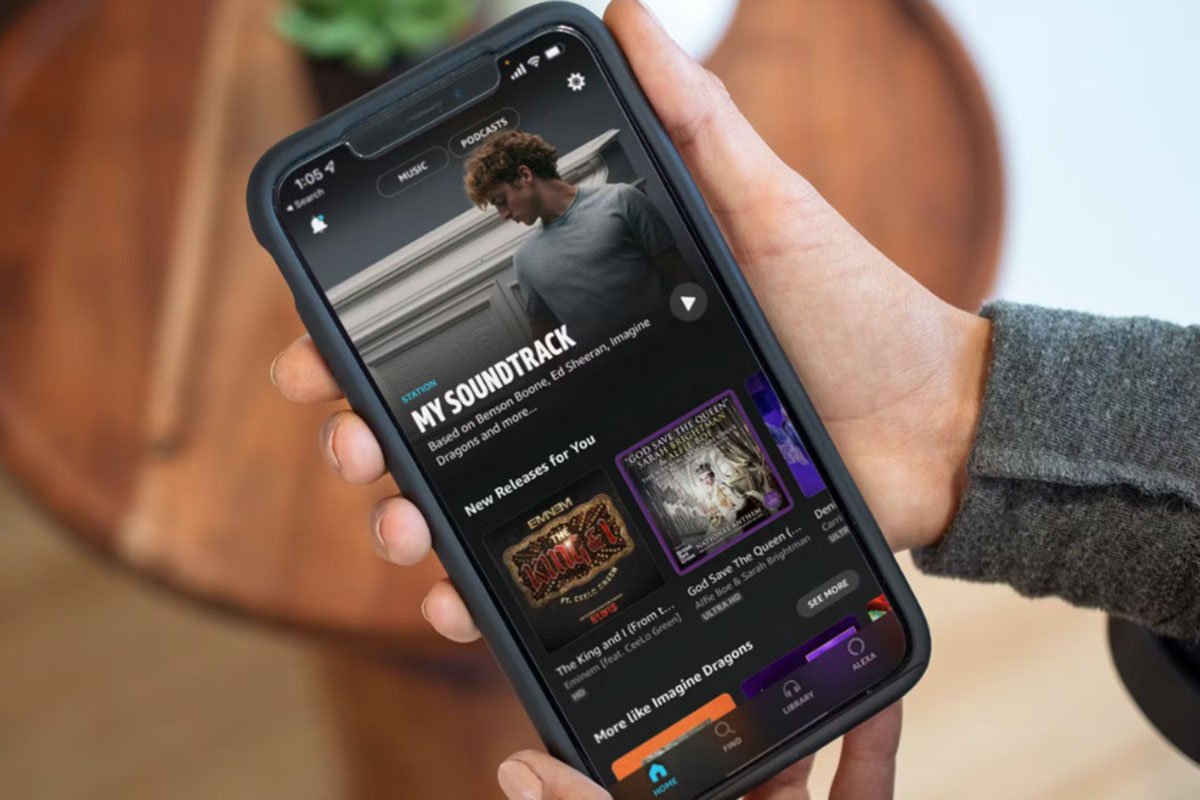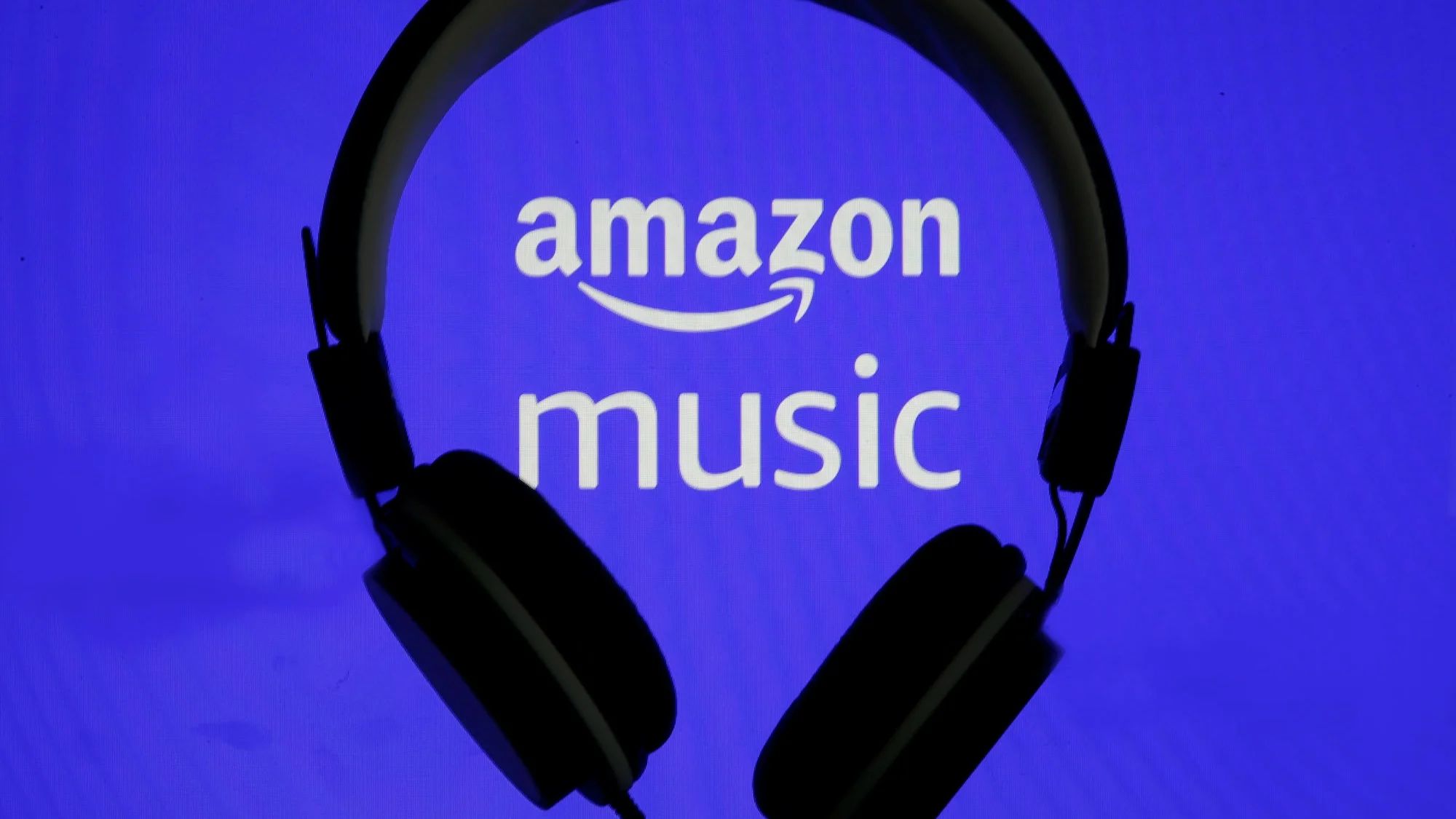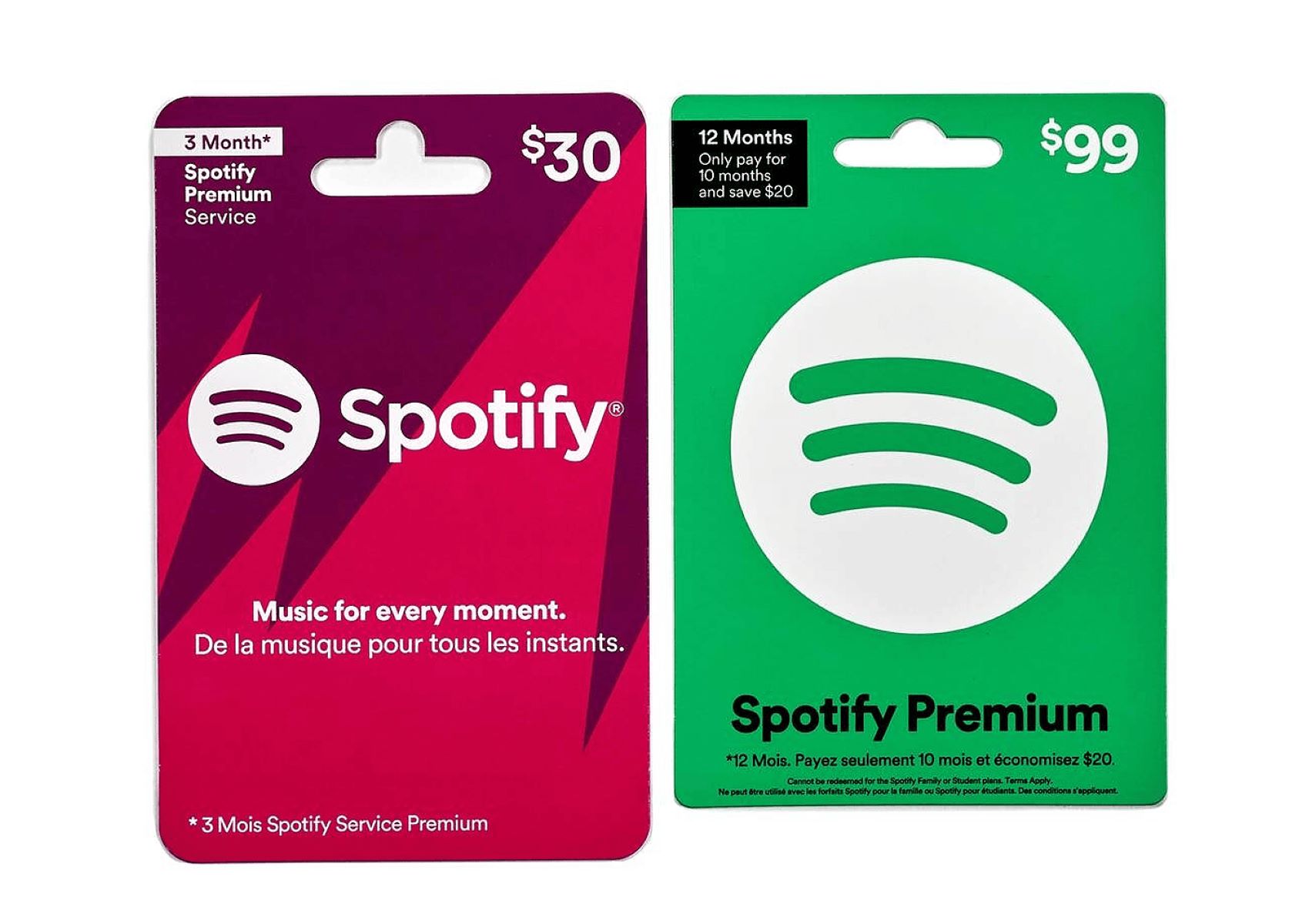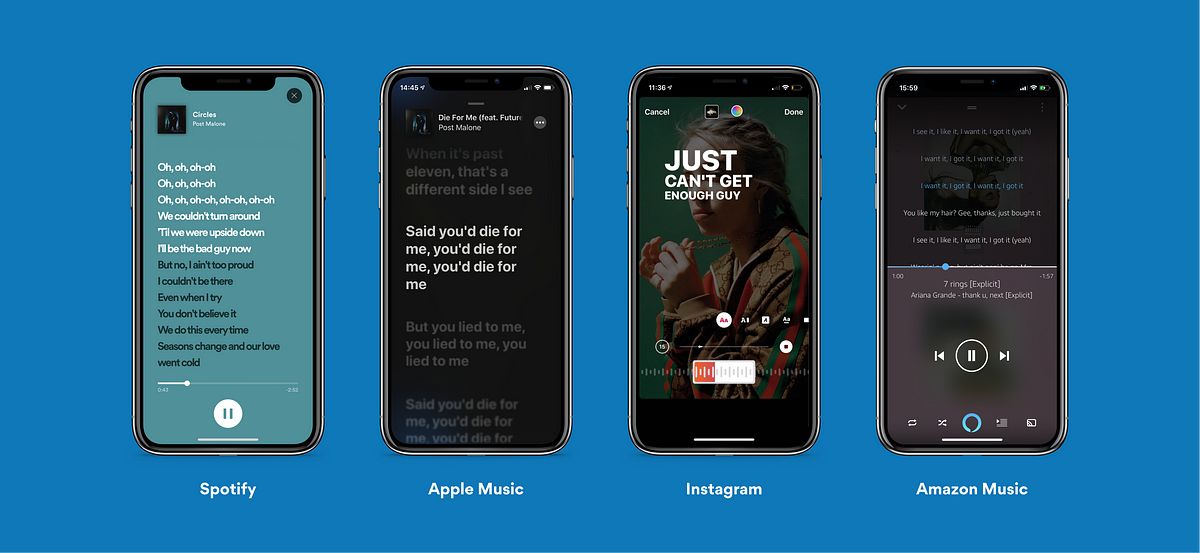Introduction
Welcome to the world of digital music streaming, where millions of songs are just a few taps away. In this digital age, music lovers have embraced the convenience and flexibility offered by streaming platforms. One of the leading players in this space is Amazon Music, a service that provides access to a vast library of songs spanning various genres and artists.
Amazon Music was launched in 2007 by the e-commerce giant Amazon, initially as a digital music store. Over time, it evolved into a streaming platform, offering users the ability to stream songs on demand and create personalized playlists. With its extensive catalog and user-friendly interface, Amazon Music has become a popular choice among music enthusiasts around the globe.
Music streaming has revolutionized the way we consume music. Gone are the days of purchasing physical CDs or downloading individual tracks. With Amazon Music, music lovers can access millions of songs instantly and listen to them on any device with an internet connection. Whether you’re rediscovering old favorites or exploring new artists, Amazon Music provides a seamless experience.
One of the unique aspects of Amazon Music is its integration with other Amazon services and devices. If you’re an Amazon Prime member, you get access to a selection of songs and playlists included with your membership. Additionally, Amazon Music can be easily accessed on popular devices like Amazon Echo smart speakers, making it even more convenient for users to enjoy their favorite tunes.
In this article, we will delve into the history, features, and user base of Amazon Music. We will also explore how it compares to other music streaming platforms and examine the factors contributing to its success. So, sit back, relax, and let’s dive into the world of Amazon Music!
History of Amazon Music
The roots of Amazon Music can be traced back to 2007 when Amazon launched its digital music store, initially offering a selection of songs for purchase and download. However, Amazon recognized the growing popularity of music streaming and decided to expand its offering to meet the changing needs of music consumers.
In 2011, Amazon introduced Amazon Cloud Player, a cloud-based music storage and streaming service. This allowed users to upload their existing music collection to the cloud and access it from any compatible device. It was a significant step towards the streaming model that Amazon Music would adopt in the future.
Building on the success of Amazon Cloud Player, Amazon launched Amazon Prime Music in 2014. Available exclusively for Amazon Prime members, Prime Music offered access to a limited library of songs at no additional cost, enhancing the value proposition for Prime subscribers.
Continuing its evolution, Amazon rebranded its streaming service as Amazon Music Unlimited in 2016. With this transition, Amazon aimed to position itself as a strong competitor in the crowded music streaming market, offering a vast catalog of songs for on-demand streaming.
Amazon Music has not only focused on individual listeners but has also recognized the importance of catering to different demographics. In 2019, Amazon launched Amazon Music HD, a higher-quality streaming option that delivers songs in lossless audio formats, appealing to audiophiles and those seeking an enhanced listening experience.
In recent years, Amazon has continued to expand its reach in the music industry. It has made strategic partnerships with record labels and artists, secured exclusive album releases, and even explored ventures into live concert streaming. These efforts have helped Amazon Music establish itself as a prominent player in the fiercely competitive music streaming landscape.
Today, Amazon Music is available in various countries and offers a comprehensive range of features, including personalized playlists, curated radio stations, and integration with Amazon devices like Echo and Fire TV. Its journey from a digital music store to a full-fledged streaming platform is a testament to Amazon’s commitment to providing innovative and accessible music experiences for its users.
How Amazon Music Works
Amazon Music operates on a simple yet powerful streaming model that allows users to access and listen to a vast library of songs. When you sign up for Amazon Music, you gain access to millions of tracks from various genres and artists. Here’s an overview of how Amazon Music works:
First, you’ll need to choose the type of subscription that suits your needs. Amazon offers different tiers, including Amazon Music Free, Amazon Music Prime, and Amazon Music Unlimited. Each tier provides a different level of access and features.
Amazon Music Free: This basic tier is available to all Amazon customers, allowing them to listen to a limited selection of songs and playlists. While it offers a smaller library compared to the other tiers, it still provides an opportunity to explore and discover new music.
Amazon Music Prime: As an Amazon Prime member, you get access to a curated collection of songs and playlists at no additional cost. This tier adds value to Prime membership by providing a seamless music streaming experience.
Amazon Music Unlimited: For those looking for a broader music selection, Amazon Music Unlimited is the premium tier. With a monthly subscription fee, users can unlock unlimited access to millions of songs and enjoy advanced features like offline playback, hands-free listening, and personalized recommendations.
Once you’ve chosen your subscription, you can start exploring the vast library of songs available on Amazon Music. You can search for specific tracks, albums, or artists or browse through curated playlists and recommendations based on your listening habits.
Amazon Music supports multiple devices, including smartphones, tablets, computers, and smart speakers like Amazon Echo. Simply download the Amazon Music app on your preferred device or access it through a web browser to start streaming.
In addition to searching and streaming songs on demand, Amazon Music offers personalized features to enhance your listening experience. These features include creating and sharing playlists, saving favorite songs, and discovering new music through tailored recommendations based on your listening history and preferences.
Amazon Music also integrates seamlessly with other Amazon services and devices. For example, if you’re using an Amazon Echo smart speaker, you can simply ask Alexa, the voice assistant, to play songs from Amazon Music, allowing for a hands-free and effortless listening experience.
Whether you’re enjoying music on your daily commute, hosting a gathering with friends, or relaxing at home, Amazon Music provides a user-friendly and flexible platform to enjoy your favorite tunes.
Comparison with Other Music Streaming Platforms
When it comes to music streaming, Amazon Music competes with other popular platforms in the market. Let’s take a look at how Amazon Music compares to some of its key competitors:
Spotify: Spotify is one of the most well-known music streaming platforms globally, boasting a massive library of songs and a highly intuitive interface. It offers a free ad-supported tier along with premium subscription options. While Spotify excels in its personalized recommendations and curated playlists, Amazon Music differentiates itself with its tight integration with Amazon’s ecosystem and exclusive offerings for Prime members.
Apple Music: Built on the foundation of iTunes, Apple Music has gained a significant user base, especially among Apple device users. Like Amazon Music, it offers a vast catalog of songs and curated playlists. Apple Music stands out with its seamless integration with Apple devices and its emphasis on exclusive artist content and live radio stations. On the other hand, Amazon Music’s strength lies in its integration with Amazon services and devices, as well as its competitive pricing options.
YouTube Music: YouTube Music combines songs, music videos, live performances, and covers into a single platform. It offers both free and premium subscription models. YouTube’s advantage lies in its extensive library of music videos, which appeals to users who enjoy visuals along with music. However, Amazon Music’s focus on audio streaming and its integration with Amazon Echo devices provide a streamlined experience for those who primarily seek a music-centric platform.
Tidal: Tidal positions itself as a high-fidelity music streaming service, catering to audiophiles who prioritize audio quality. It offers lossless audio streaming and exclusive access to certain artists and content. While Tidal excels in its audio quality, Amazon Music has also introduced a high-definition streaming option, known as Amazon Music HD, further expanding its offerings to cater to audiophile listeners.
Each of these music streaming platforms has its unique features and strengths, allowing users to choose based on their preferences and requirements. Amazon Music sets itself apart through its integration with Amazon’s ecosystem, diverse subscription options, and the added benefits it offers to Amazon Prime members.
It’s important to note that personal preference plays a significant role in choosing a music streaming platform. What matters most is finding a service that aligns with your music preferences, offers a user-friendly experience, and provides the features and benefits that add value to your listening journey.
Benefits of Amazon Music
Amazon Music offers a range of benefits that make it a popular choice among music enthusiasts. Let’s explore some of the key advantages of using Amazon Music:
1. Extensive Music Library: Amazon Music provides access to a vast library of millions of songs across various genres and languages. Whether you’re a fan of classical music, hip-hop, or pop, you can find a wide selection of tracks to suit your taste.
2. Personalized Recommendations: With its advanced recommendation algorithms, Amazon Music suggests new songs and artists based on your listening history, preferences, and even the time of day. This personalized touch helps you discover new music that matches your interests and keeps your music experience fresh.
3. Integration with Amazon’s Ecosystem: Being part of the Amazon family, Amazon Music seamlessly integrates with other Amazon services and devices. If you’re an Amazon Prime member, you can easily access Amazon Music Prime, which offers a curated selection of songs and playlists at no additional cost. Moreover, Amazon Music is compatible with devices like Amazon Echo, allowing for voice-controlled playback and a hands-free listening experience.
4. Offline Listening: Amazon Music allows users to download songs and playlists for offline listening. This feature is especially useful when you’re traveling or in areas with poor internet connectivity. Simply download your favorite tracks and enjoy them without worrying about data usage or a stable internet connection.
5. Curated Playlists and Stations: Amazon Music offers a wide range of curated playlists and radio stations to suit different moods, occasions, and musical preferences. Whether you’re looking for a playlist to fuel your workout or a calming station for relaxation, you’re bound to find a selection that matches your needs.
6. Enhanced Audio Quality: In addition to its standard streaming quality, Amazon Music also introduced Amazon Music HD, a high-definition streaming option. With Amazon Music HD, audiophiles can enjoy lossless audio formats that deliver superior sound quality. This feature appeals to those who prioritize experiencing music in the highest fidelity possible.
7. Enhanced Music Discovery: Amazon Music provides various tools to help users discover new music. In addition to personalized recommendations, users can explore charts, new releases, and artist profiles to stay up-to-date with the latest trends and discover talented emerging artists.
8. Versatile Subscription Options: Amazon Music offers flexible subscription models catering to different needs. From the free tier with limited access to the robust offerings of Amazon Music Unlimited, users can choose the option that suits their budget and desired level of music selection.
With its extensive library, personalized recommendations, integration with Amazon’s ecosystem, and a range of subscription options, Amazon Music provides a captivating music streaming experience. Whether you’re a casual listener or a dedicated music lover, Amazon Music offers a platform that is affordable, convenient, and tailored to your musical preferences.
How Many Users Does Amazon Music Have
Amazon Music has amassed a significant user base since its inception. However, unlike some other music streaming platforms, Amazon has not publicly disclosed the exact number of users for Amazon Music. Instead, they often use terms like “tens of millions” to describe the size of their user base.
While the precise user count may not be publicly available, it’s evident that Amazon Music has successfully attracted a substantial number of music enthusiasts. This popularity can be attributed to several factors:
1. Amazon Prime Membership: As part of the Amazon Prime membership, users gain access to Amazon Music Prime, which provides a curated collection of songs and playlists. Since Amazon Prime membership offers a wide range of benefits beyond just music streaming, it attracts a significant number of subscribers who then become potential users of Amazon Music.
2. Integration with Amazon Echo: Amazon Music is closely integrated with Amazon Echo, the popular line of smart speakers. With the ability to control music playback using voice commands through Alexa, Amazon Music becomes an attractive choice for users who own Amazon Echo devices. This seamless integration adds to the overall user base of Amazon Music.
3. Global Availability: Amazon Music is available in several countries around the world, including the United States, United Kingdom, Germany, Japan, and many more. This global presence allows Amazon Music to tap into diverse markets and attract a wide range of users from different regions.
4. Diverse Subscription Options: Amazon Music offers different subscription tiers to cater to different needs and budget constraints. This versatility, with options like Amazon Music Free, Amazon Music Prime, and Amazon Music Unlimited, allows users to choose a plan that aligns with their requirements, further expanding the user base of Amazon Music.
While Amazon may not disclose specific user numbers, the popularity and success of Amazon Music can be seen through the continuous growth and the increasing adoption of its services. As the music streaming market evolves and competition intensifies, Amazon Music remains a strong contender, constantly striving to enhance its offerings and attract new users.
Factors Contributing to Amazon Music’s User Base
The success of Amazon Music and its growing user base can be attributed to several key factors. These factors have played a significant role in attracting users and fostering loyalty among music enthusiasts. Here are some of the key contributors to Amazon Music’s user base:
1. Integration with Amazon’s Ecosystem: Amazon Music benefits from being a part of the larger Amazon ecosystem. With millions of customers worldwide, Amazon has a strong customer base that it can leverage to promote Amazon Music. The seamless integration with other Amazon services and devices, such as Amazon Echo, creates a cohesive user experience and encourages users to explore and adopt Amazon Music.
2. Prime Membership: Amazon offers access to Amazon Music Prime as part of its Prime membership program. This membership program, which includes benefits such as free two-day shipping, streaming of movies and TV shows, and exclusive deals, attracts a substantial number of users. The inclusion of Amazon Music Prime as one of the perks enhances the overall value proposition of Prime membership, leading to increased adoption of Amazon Music.
3. Diverse Music Catalog: Amazon Music boasts an extensive library of songs spanning various genres and languages. This diverse music catalog caters to a wide range of musical preferences, attracting users from different backgrounds and demographics. The availability of both popular hits and niche selections ensures that users can find the music they love, contributing to the growth of Amazon Music’s user base.
4. User-Friendly Interface: The user interface of Amazon Music is designed to be intuitive and user-friendly. The app and web interface are easy to navigate, allowing users to quickly search for and play their favorite songs. Additionally, features like curated playlists, personalized recommendations, and the ability to create and share playlists enhance the overall user experience, keeping users engaged and encouraging them to stay loyal to Amazon Music.
5. Offline Listening Capability: Amazon Music offers the option to download songs and playlists for offline listening. This feature is particularly appealing to users who frequently travel or find themselves in areas with limited internet connectivity. The ability to enjoy music offline ensures that users can continue to listen to their favorite songs without interruptions, making Amazon Music a convenient choice for music lovers on the go.
6. Competitive Pricing: Amazon Music provides different subscription tiers to suit various budgets and needs. The availability of a free tier, as well as affordable premium options like Amazon Music Unlimited, makes it accessible to a wide range of users. The competitive pricing structure positions Amazon Music as an attractive option among the crowded music streaming market.
Collectively, these factors have contributed to the growth of Amazon Music’s user base. The integration with Amazon’s ecosystem, the appeal of Prime membership, the diverse music catalog, the user-friendly interface, offline listening capability, and competitive pricing have all played a vital role in attracting users and retaining their loyalty. As Amazon continues to innovate and expand its music services, we can expect further growth in the user base of Amazon Music.
Amazon Music Growth Strategies
Amazon Music has implemented various strategies to fuel its growth and expand its user base. These strategies have played a crucial role in solidifying its position in the competitive music streaming industry. Let’s explore some of the key growth strategies employed by Amazon Music:
1. Cross-Promotion with Amazon Prime: One fundamental growth strategy for Amazon Music is its integration with Amazon Prime. By offering Amazon Music Prime as part of the Prime membership, Amazon has effectively leveraged its large customer base and Prime’s popularity to attract users to its music streaming service. This cross-promotion strategy has proven successful in driving adoption and encouraging users to discover and engage with Amazon Music.
2. Expanding Global Reach: Amazon Music has pursued an aggressive expansion strategy by launching its services in multiple countries worldwide. By expanding into new markets, Amazon Music has been able to tap into diverse audiences and capture a larger user base. This global reach has allowed Amazon Music to compete with other music streaming platforms on a global scale, further driving its growth.
3. Continuous Enhancements to User Experience: Amazon Music places a strong focus on improving the user experience. The platform regularly introduces updates and new features to enhance user engagement and satisfaction. These enhancements include personalized recommendations, curated playlists, offline listening capabilities, and seamless integration with Amazon devices like Echo. By consistently refining and enhancing the user experience, Amazon Music aims to retain existing users and attract new ones.
4. Exclusive Content and Partnerships: To differentiate itself from competitors, Amazon Music has secured exclusive content and partnerships with renowned artists, record labels, and live concert promoters. This strategy allows Amazon Music to deliver unique experiences to its users, such as exclusive album releases, live concert streams, and special artist collaborations. By offering exclusive content, Amazon Music aims to capture the attention of both avid music fans and casual listeners.
5. Marketing Campaigns and Promotions: Amazon Music has invested in marketing campaigns and promotions to raise awareness and generate interest in its services. This includes advertising on various platforms, sponsorships of music events and festivals, and targeted campaigns to specific demographics. By leveraging its brand recognition and utilizing strategic marketing efforts, Amazon Music aims to attract new users and drive adoption.
6. Customization and Personalization: Amazon Music focuses on providing a personalized experience to its users. Through advanced recommendation algorithms and curated playlists, Amazon Music tailors its offerings to match each user’s individual tastes and preferences. This focus on customization helps create a unique and engaging experience for users, fostering loyalty and driving user growth.
By implementing these growth strategies, Amazon Music has been able to establish itself as a leading player in the music streaming industry. Its cross-promotion with Amazon Prime, global expansion, continuous improvements to the user experience, exclusive content and partnerships, strategic marketing campaigns, and emphasis on customization have all contributed to its robust growth and increasing user base. As the music streaming landscape continues to evolve, we can expect Amazon Music to continue pushing boundaries and exploring innovative strategies to further expand its reach and solidify its position in the market.
Conclusion
Amazon Music has come a long way from its humble beginnings as a digital music store to becoming a prominent player in the competitive music streaming industry. With its integration into the Amazon ecosystem, diverse subscription options, and extensive library of songs, Amazon Music has attracted a substantial user base of music enthusiasts around the world.
Throughout its journey, Amazon Music has strategically employed various growth strategies to expand its user base and enhance the overall music streaming experience. From cross-promotion with Amazon Prime to global expansion, continuous improvements to the user interface, exclusive content and partnerships, targeted marketing, and personalized recommendations, Amazon Music has demonstrated its commitment to providing a seamless and captivating music streaming service.
While the exact number of users remains undisclosed, the widespread popularity of Amazon Music is evident through its continuous growth and the numerous loyal users it has attracted. The convenience, affordability, and integration with Amazon’s ecosystem have undoubtedly played a significant role in driving user adoption and retention.
Looking ahead, Amazon Music is poised for further growth and innovation in response to the evolving music streaming landscape. As it continues to refine its offerings, explore partnerships, and leverage its vast customer base, Amazon Music will likely remain a formidable competitor in the industry.
Whether you’re a casual listener or a dedicated music lover, Amazon Music provides a platform that offers convenience, depth, and an enjoyable listening experience. With its extensive library, personalized features, and seamless integration with Amazon devices, Amazon Music has established itself as a go-to destination for music enthusiasts of all kinds.
So, whether you find yourself tapping your feet to the latest hits or immersing yourself in the melodies of yesteryears, Amazon Music is there to accompany you on your musical journey.

























